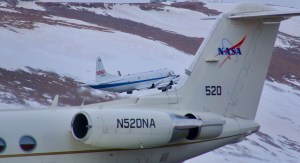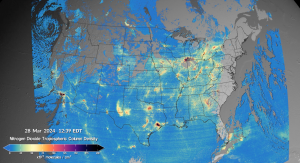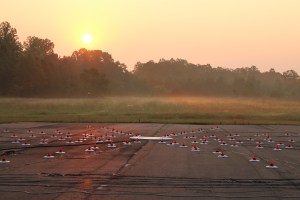
4 min read
Preparations for Next Moonwalk Simulations Underway (and Underwater)

The California State Polytechnic University, Pomona, team, with their project titled “Aero-Quake Emergency Response Network,” took first place at the third annual Gateways to Blue Skies Competition. Competing among eight finalist teams that presented their ideas for aviation-related systems for natural disasters, the California State Polytechnic University, Pomona team earned the top award at the 2024 Blue Skies Forum, hosted at NASA’s Ames Research Center May 30-31. The Forum was judged by subject matter experts from NASA and industry.
In addition to the first-place recognition, team members were awarded an opportunity to intern at any of the four NASA Aeronautics Centers — Langley Research Center (Hampton, VA), Glenn Research Center (Cleveland, OH), Ames Research Center (Mountain View, CA), and Armstrong Flight Research Center (Edwards, CA) —across the country during the 2024-25 Academic Year.
“We truly enjoyed the NASA Blue Skies competition,” said team lead Krishi Gajjar. “We are honored that our efforts have been awarded by the experienced and diverse judging panel. This would not have been possible without the guidance from our advisor, professor Mark Gonda, and our rigorous engineering program at Cal Poly Pomona. We are proud to have grown together as a team and are excited to continue advancing aviation in our future careers as aerospace engineers!”
Second place went to Columbia University with their project, “AVATARS: Aerial Vehicles for Avalanche Terrain Assessment and Reporting Systems.”
Other awards included:
- Future Game-Changer Award: Cerritos College | F.I.R.E (Fire Intervention Retardant Expeller)
- Most Innovative Award: North Carolina State University | Reconnaissance and Emergency Aircraft for Critical Hurricane Relief (REACHR)
Sponsored by NASA’s Aeronautics Research Mission Directorate’s University Innovation Project, the Gateways to Blue Skies Competition is an initiative to engage college students in researching climate-friendly technologies and applications related to the future of aviation. Because of the increase in natural disasters compounded by climate change, the 2024 theme, “Advancing Aviation for Natural Disaster,” asked students to investigate and conceptualize, in terms of feasibility and viability, aviation-related systems that can be applied by 2035 to one phase of management of a chosen type of natural disaster to improve capabilities.
Because many emergency response professionals believe there is no one proposed concept that will be applicable for all different natural disasters or can be applied to all phases of management, this competition welcomed a wide range of potential solutions. New technologies and applications gained from this crowdsourced competition may be developed further by NASA for use in coordinating and facilitating disaster management.
At the Forum, finalist teams presented concepts of systems that addressed responses to natural disasters such as earthquakes, avalanches, volcanic eruptions, hurricanes, floods, and wildfires.
“Whenever NASA engages with students, it’s such a rewarding experience,” said Steven Holz, NASA Aeronautics University Innovation Assistant Project Manager and Blue Skies judge and co-chair. “This competition encourages students to imagine, expand, and tackle the challenges and opportunities that await in the future of aeronautics. The students bring unique concepts and ideas to the table along with a wealth of knowledge and professionalism. It’s always exciting to have the chance to see firsthand what they come up with next.”
Students also had the opportunity to network with NASA and industry experts, tour NASA’s Ames Research Center, and gain insight into potential careers and applications that will further the Agency’s mission toward a climate-friendly aviation future.
“Because natural disasters are so far-reaching and impactful to so many, we had a lot of interest in this year’s competition,” added Marcus Johnson, project manager in the Aeronautics Directorate at NASA Ames Research Center and 2024 Blue Skies co-chair. “Each of the eight finalist teams that presented at this year’s Forum were passionate about their concepts and each offered compelling ideas. This competition is about so much more than just “awards,” it’s about connecting, networking and identifying the future leaders in aeronautics.”
The 2024 Gateways to Blue Skies Competition is sponsored by NASA’s Aeronautics Research Mission Directorate and administered by the National Institute of Aerospace.
****
View the livestream of the competition presentations: https://vimeo.com/showcase/blueskies
View the competition finalists: https://blueskies.nianet.org/finalists/
To learn more about the 2024 Gateways to Blue Skies: Advancing Aviation for Natural Disasters Competition, visit: https://blueskies.nianet.org/competition/
For more information about NASA Aeronautics, visit: https://www.nasa.gov/topics/aeronautics/index.html











